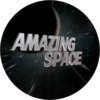Members Can Post Anonymously On This Site
SANTA LIVE TRACKER - Send Your Santa Shoutouts To Family And Friends
-
Similar Topics
-
By Space Force
The TRICARE Online Patient Portal will no longer be available April 1.To retain health records, download them from the TOL Patient Portal before April 1.
View the full article
-
Check out these Videos



Recommended Posts
Join the conversation
You can post now and register later. If you have an account, sign in now to post with your account.
Note: Your post will require moderator approval before it will be visible.